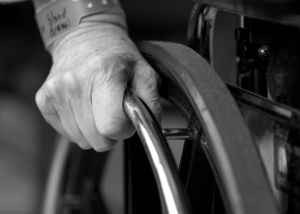
Only at HME News do we give you an award, then reward you by sticking you on the hot seat, in this case, a panel discussion here in front of 170 of your peers at the HME Business Summit.
More providers than ever submitted applications for our annual HME Excellence Awards (I don’t envy the judges having to select from all those great companies).
And the winners are: Robert Shellenberger, owner, Qualicare Home Medical Teresa Glass Owens, president/CEO, Glass Seating and Mobility Jay Broadbent, president, Alpine Home Medical Equipment
How are winners thinking outside the box?
Robert: We’re looking at more non-traditional DME ventures, like skilled nursing, children’s homes, things that the community needs for these institutions.
Jay: Our retail operation. A lot of folks try retail and have limited success. Each of our stores, we tried to model them so they are kind of cookie cutter, same look, same products. One thing we’ve found, they like to come in and look, feel and touch. A lot of folks that bought from us retail, they become a customer for life because they had a good retail experience. We feel very fortunate and blessed with response to our business, so we started the B in Motion Foundation. The dollars we raise provides wheelchairs to individuals without insurance or whatever the reason that they aren’t able to get the equipment that they need.
Teresa: One thing we have done, is hang onto our customers long term. You are gonna get the new patients, but you want to hang onto those you already have.
Why are winners involved in clinical groups, community organizations and industry associations?
Robert: Clinical groups keep us in touch with clinical activities. We have to be recognized as clinically competent. As far as community groups, it’s the recognition. We don’t just take from the organization, we give back to the community. Qualicare gets recognized and I think that’s great.
How do winners plan to incorporate the award into their marketing?
Teresa: We’re currently asking marketing consultants to see how we can go to next level. Rehab is different, it really is reputataion. We are real careful how we market ourselves. One thing we try to do is empower employees, the award has been a huge confidence booster for them. We have a really strong team, but it didn’t happen overnight.
Jay: We are very excited and proud. It’ll be on our website, our literature. It’s a competiitve business and anything you can do to establish yourself and set yourself apart is good for your business.
Robert: Look at two clicnal programs, skillded nrugs and opedait that’s gogin to take a lto fo time and reosuces.
Teresa: Our top priority is to continue to grow but we are really going to support, as much as we can, our association. If they want us on the phone to our congressmen, we’ll call. If they want us to fly to Washington, we’ll go. We are really trying to do as much as we can to stay in the game and get carved out further from competitive bidding. There’s a lot of education that complex rehab has got to do. It takes time but for our business to survive we’ve got to show people what we do.
Jay: We’re going to continue with our lean process and continue to refine our processes and look for waste and efficiencies.
Article written by HME News.
















.jpg/236px-Hurricane_Irene_(1999).jpg)












